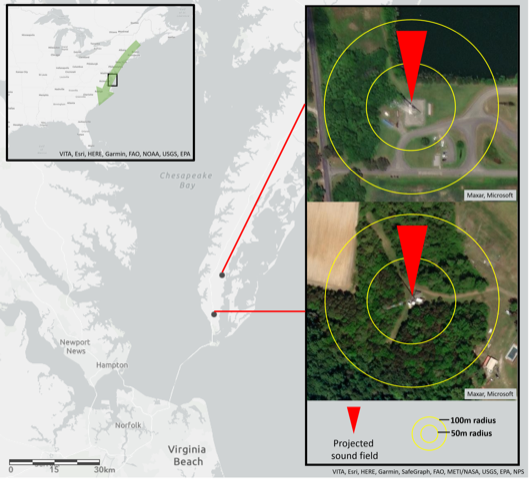Worldwide, billions of birds die each year when they collide with human-made structures like large communication towers, buildings, and wind turbines. Longwood’s Dr. Brandon Jackson collaborated with Tim Boycott, Sally Mullins, and Dr. John Swaddle, both from William and Mary, to test the effectiveness of an “acoustic lighthouse” on Virginia’s Delmarva Peninsula. Their work was recently published in the journal PLoS ONE (https://journals.plos.org/plosone/article?id=10.1371/journal.pone.0249826).
Birds tend to look at the ground while migrating, and the placement of their eyes on the sides of their heads means they have poor binocular vision. As a result, they can miss seeing human-made structures taller than the surrounding trees directly in front of them. To get their attention, Dr. Swaddle developed a speaker system that produces a white noise in frequencies birds pay attention to in laboratory tests. The biologists hoped this noise could form an “acoustic lighthouse” by alerting birds to prevent them from flying to closely to tall structures.
Tim Boycott placed the speakers at four communication towers in the autumn migration flyway on the Delmarva Peninsula. While the speakers projected various frequencies of noise, or no noise at all, he filmed the sky with GoPro cameras. Those videos were analyzed in software written by Dr. Jackson to measure the 3D flight paths of any birds that came into view.
The team compared the flight tracks while the acoustic net was active to tracks when other sounds or no sounds were playing. When the lighthouse was active, bird activity within the “danger area” around the towers was reduced 12-16%. The birds that entered the danger area seemed to be more alert to the tower; they flew at a lower speed and turned away from the tower more, compared to birds in the danger area when no sound was playing.


